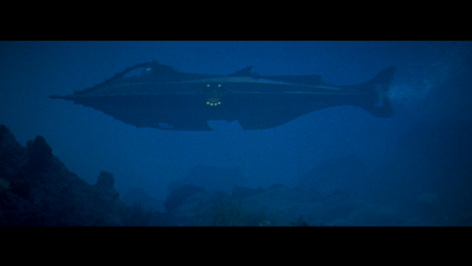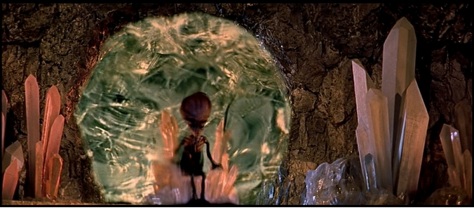
by Mx. Kris Vyas-Myall
Last Summer I complained about the growth of “flower music” onto the charts in the UK. Almost as quickly as it appeared, it seems to have vanished again, apparently being a phenomenon over here only as long as it was 1967. In fact, there is barely anything that could be described as psychedelic in the top 40 singles or albums.

The only notable exception is “Fire” by The Crazy World of Arthur Brown, which is very different from the sounds coming out of California last year.

So, what has been replacing it? Well, firstly there has been a revival in the heavier blues sound, in both established acts such as The Rolling Stones and John Mayall, or new acts like Fleetwood Mac and Chicken Shack. Others seem to moving towards a pop sounding rock ‘n’ roll with heavy degrees of satire, the kind pioneered by The Kinks, we are now seeing on acts from The Beatles to Dave Dee, Dozy, Beaky, Mick & Tich.

There are two genres that were also popular in 1967 that continue to be so. The first is the kind of Easy Listening music which predominates on BBC Radio 2, with figures such as Engelbert Humperdinck and Val Doonican. The other is folk music, which has much more variety in the charts, from the poppier sounds of Esther & Abi Ofarim, the more traditional route of Don Partridge or the curious experiments of The Incredible String Band.

But probably the biggest musical genre in Britain at the moment is soul music. Not just the continued success of American greats like The Supremes, The Four Tops or Ray Charles. But also newer acts such as P. P. Arnold, O. C. Smith and the orchestral sounds of Love Affair, along with established British Acts like Dusty Springfield, Lulu or The Mindbenders.
If anything, this goes to show how quickly musical tastes change nowadays. What was popular in the summer of ’67, ’66 or ’65 sounded decidedly old fashioned the next year. Where will tastes be in 1969? Only time will tell.
Whilst I was pondering this, a stunning new teleplay came on to Theatre 625 and gave us a glimpse into the entertainment of the future.
The Year of the Sex Olympics

It has been a while for Nigel Kneale as a TV writer, working on films such as The Witches or First Men on The Moon instead. His last teleplay was half a decade ago with the excellent clever ghost story, The Road.
His teleplays have been known to be shocking and to provoke debate, sometimes even in parliament, and this is certain to carry on in this tradition.

In a future clearly inspired by Huxley, the world now exists at peace and without want. Society is now divided into two groups:
There are a small group of “high drives” who we observe work in broadcasting and control the TV programs we see. Most people, however, are “low drives”. These people do not work, instead live in automated controlled environments. These do not have any interest in working and are kept pacified by the television programs the high drives produce.

This society seems to be set up in this way for two reasons. Firstly, it keeps people pacified with the regular mantra, “Watch not do.” Sex television was designed to stop population explosion and wars, people numbed to doing anything by just seeing it all the time.
Secondly this acts as a form of eugenics to promote more high drives. With the sexual impulse of the low drives suppressed they are less likely to reproduce and most end up dying by the age of 35. Further tests are also done to determine if any high drive children are low drives and they are cast out into the audience.

We are shown two problems with this situation. Firstly, some of the controllers are getting disenchanted with this society. Most notable is Kin Hodder, a set dresser, who is trying to introduce his real art into the broadcasts against the will of the controllers. The other is that the computers say they need to add more humour into the broadcasts, a concept none of the audience seems to be able to understand. For example, getting groups of clowns throwing custard pies only generates boredom.
Both problems are solved at the same time when the artist falls from a rope and dies in a gruesome manner, resulting in huge laughs from the audience. Thus is born a new concept: a show where people live on a remote island without any modern conveniences and are constantly filmed. Viewers get the thrill of never knowing if the participants will live or die. Two controllers, Nat and Deanie, volunteer for the pilot of the Live-Life show and bring along Deanie's daughter Keten.
Life is going to be much harder than they thought and, unbeknowst to the contestants, it turns out that the island is already inhabited. However, it will make for excellent ratings!

The dangers of television becoming more shocking for the sake of it seems to be a subject en vogue right now, for example Kate Wilhelm’s Baby You Were Great or the film Smashing Time’s You Can’t Help Laughing. However, having it on screen in this way is much more immediate and shocking.
The message is hammered home very hard throughout. Not just with the imagery but with the language as well, where we hear phrases such as:
“A censor stopped things from going too far. We stop when things don’t go far enough.”
This could seem as too didactic or curmudgeonly but it is a testament to Kneale’s skill that he manages to pull it off.
I have to wonder if some of this is also grumpiness at his own experiences of television. It is notable that “audience testing” is a big part of this future. Continuous calibration made to audience reactions and even the winners of competitions are based on this.

One of the odder choices is to give many of the (all British) cast American accents, something it does not appear they had much training on. This combined with the use of futuristic slang did make it hard to follow at times.
One person thankfully not trying to do one of these accents is Leonard Rossiter, a character actor probably well known to SFnal fans for his recent turns in The Witches and 2001: A Space Odyssey. He is an excellent choice for Coordinator Ugo, as he is able to come across as very unpleasant at the start whilst selling the disgust he feels at what is happening by the end.

We do have to talk about the ending, as it is worth the price of admission alone. However, if you would rather wait for a possible repeat showing, stop reading now.
So, on the island Keten catches a disease that would be curable in the city, however, with no help available she dies. After the funeral Deanie is then brutally murdered by another inhabitant of the island who is then killed by Nat in revenge. This delivers the effect the controllers were hoping for as we see the audiences in raucous laughter over the horrific deaths and Nat’s grief.
This is disturbing enough but Nigel Kneale adds one final twist of the knife. Throughout we hear little jingles, very much in the style of pirate radio. Rather than having dramatic music playing over the ending, we just have a continual repetition of “The Year of the Sex Olympics Jingle”. Forcing us to ask, are we the same as them? Did we learn anything from what we saw or are we just as much passive participants?
If you missed it and are in the UK, write letters to the BBC asking for a repeat. If you are outside, see if you can convince a local station to import it.
Five Stars


![[July 26, 1964] Yesterday's Tomorrows (<i>First Men in the Moon</i> and Other Steam Science Fiction Movies)](https://i0.wp.com/galacticjourney.org/wordpress/wp-content/uploads/2019/07/first-men-in-the-moon-trailer-title.jpg?resize=640%2C272)

 The super-submarine Nautilus; a thing of beauty.
The super-submarine Nautilus; a thing of beauty. Old Blue Eyes in a tiny role as a piano player.
Old Blue Eyes in a tiny role as a piano player.













